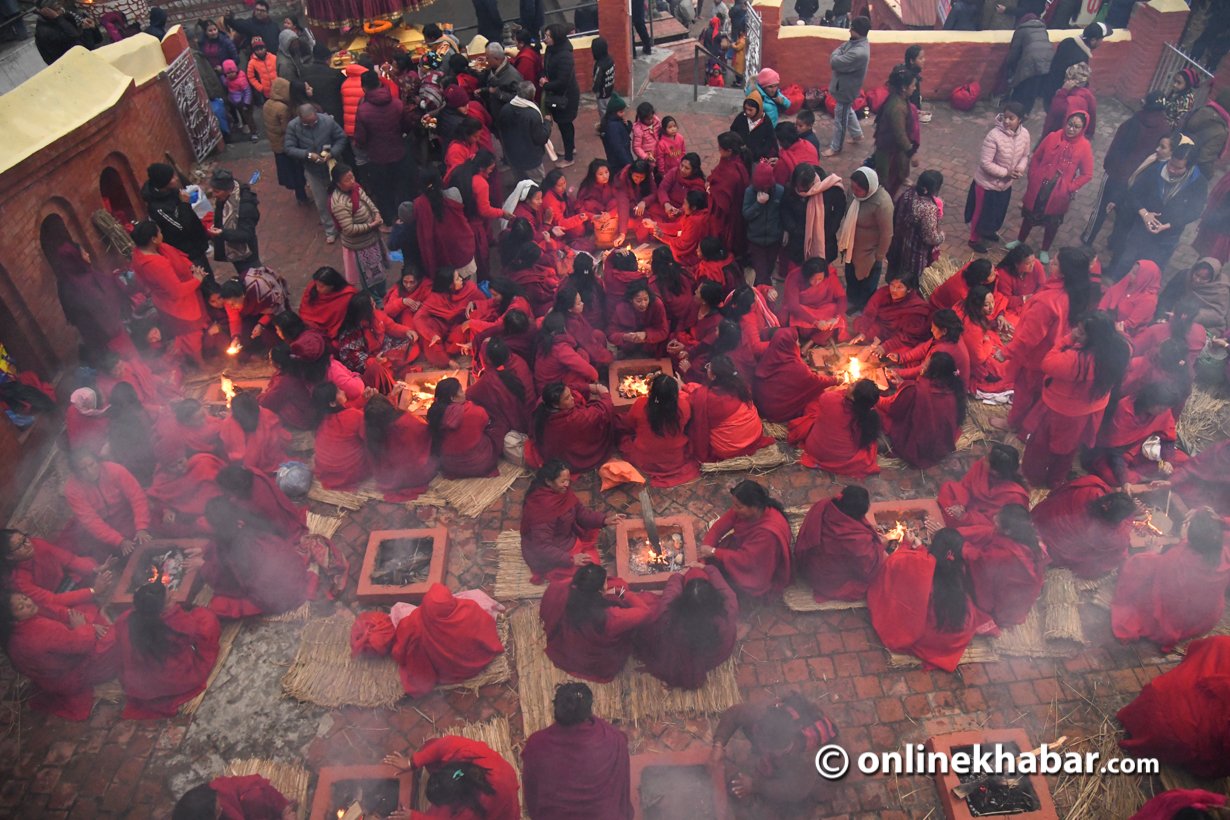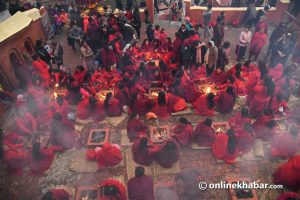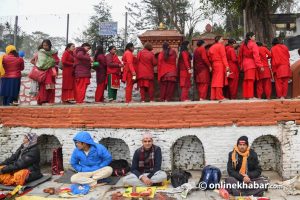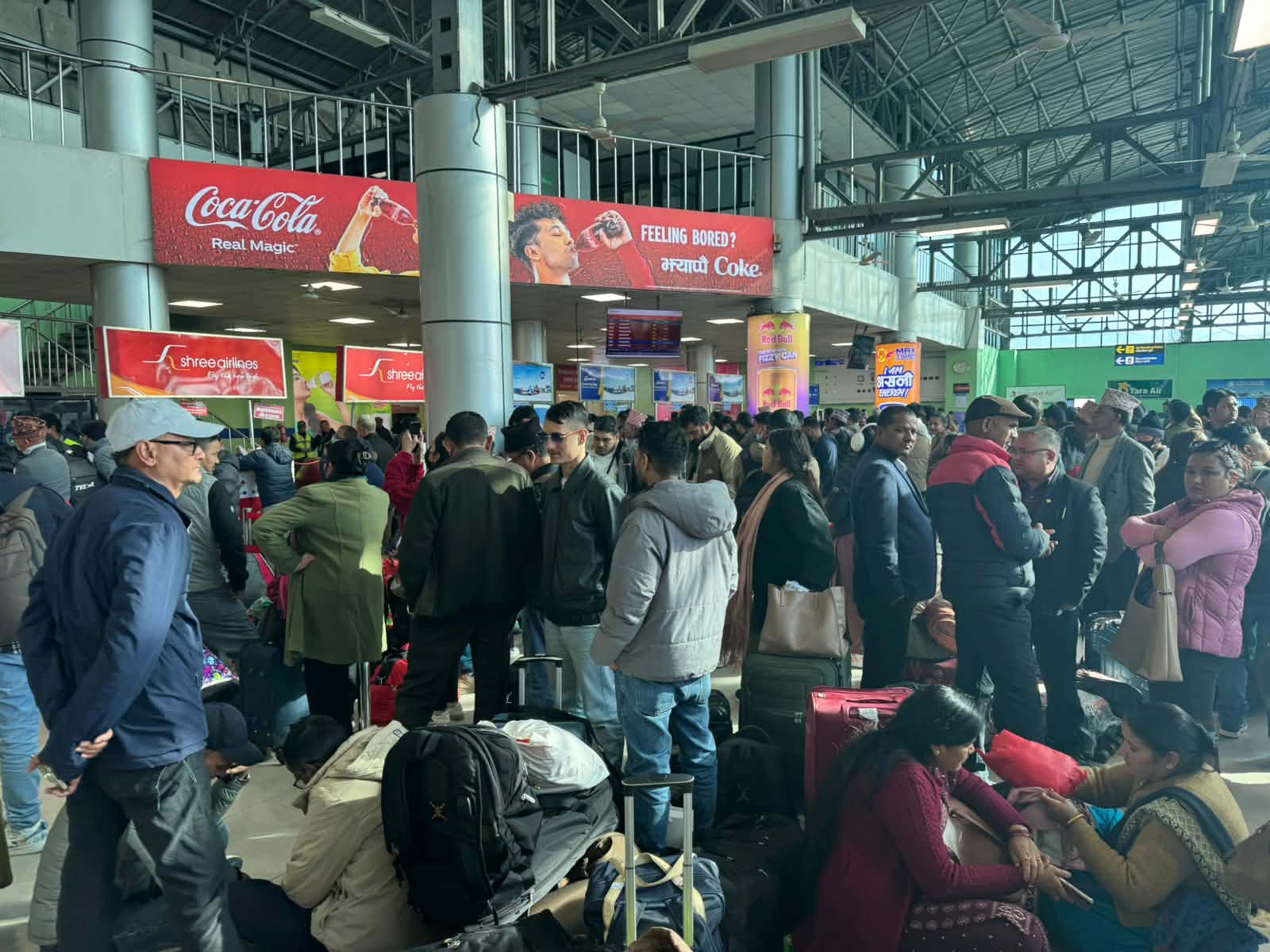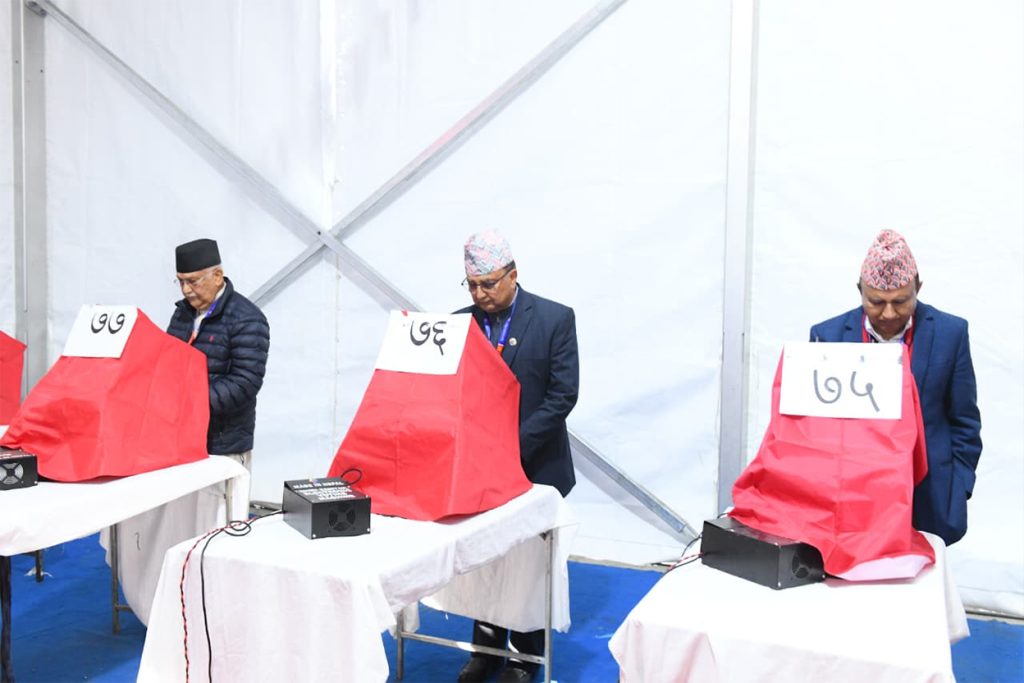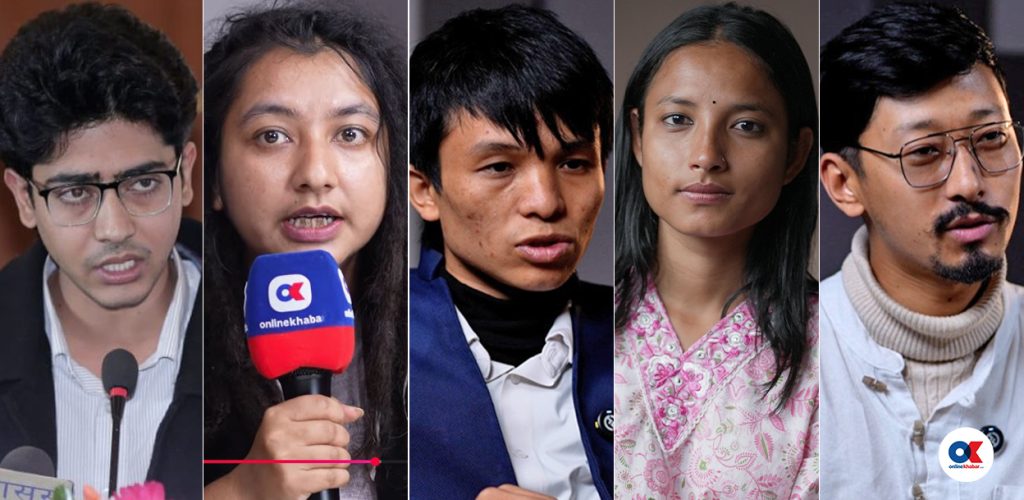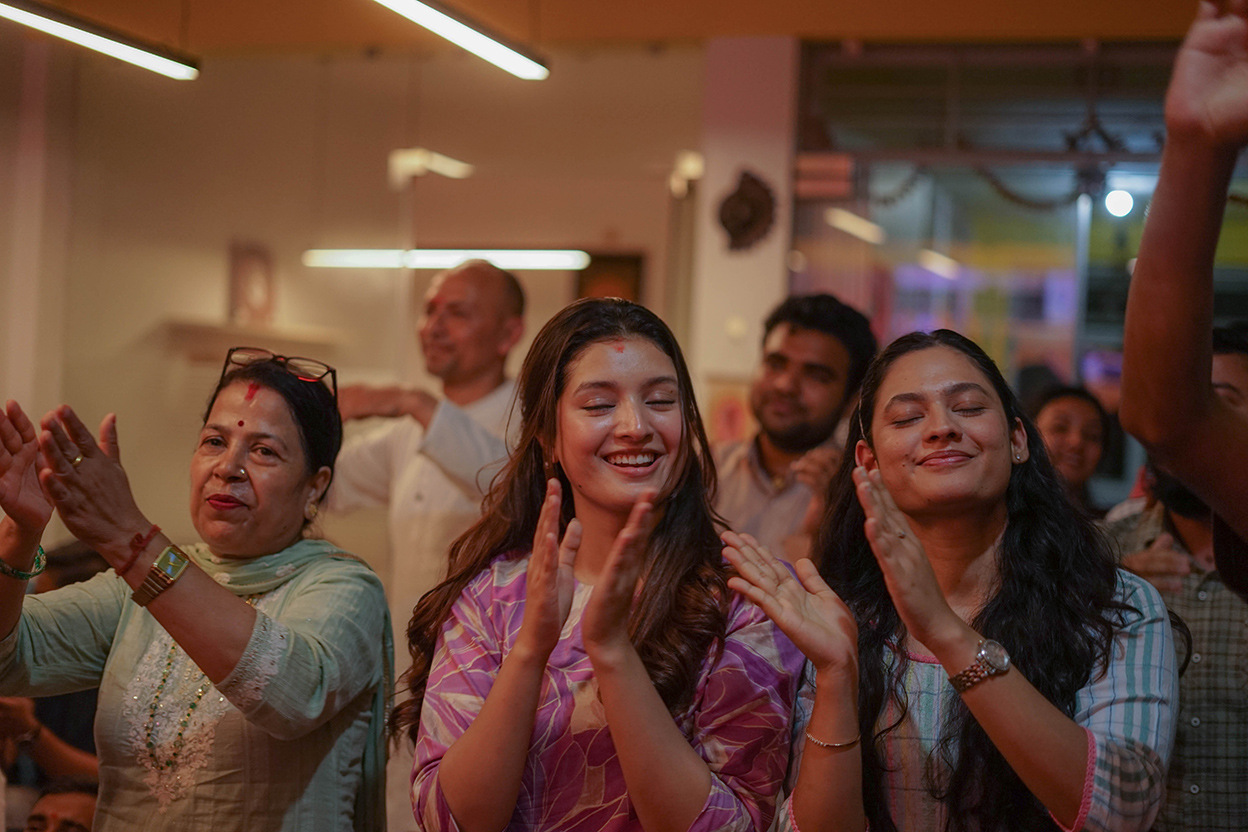Every year in Sankhu of Kathmandu, during the lunar month of Magh (January-February), devotees throng the Shalinadi stream and temple to observe a month-long fast. During the entire month of fasting, they read and follow Swasthani Brata Katha, a religious Hindu text. The text is a compilation of mythological stories about the goddess Swasthani and other Hindu gods and goddesses. A lot has been said and told regarding the festival, yet, here are some key interesting facts about Swasthani Brata Katha that you might have not heard yet:
1. Swasthani is a complicated figure
In Hindu mythologies, the women are portrayed in two major forms; a calm and compassionate figure with a male consort or a husband, eg. Parvati and Saraswati, while the second depiction is of unmarried, fierce and unforgiving girl, eg. Durga and Kali. Goddess Swasthani is both calm and composed, yet described as a fierce and unforgiving figure, like in the Chandrawati’s story. The popular depiction of Goddess Swasthani is of her sitting on a lotus flower between the Asthamatrika, eight protective goddesses. But, on a statue found at Makkhan, she has been depicted together with Lord Shiva, as her male consort.
2. It was first written in Nepal Bhasa
Although it has not been proven, it has been suggested that Swasthani was first written in Nepal Bhasa as early as 693 Nepal Sambat or around 1573 AD by Jayanta Dev. One can see some evidence when one considers the dates on the manuscripts found, along with the printed versions of the books, and the language it was written in. Researchers have found that Nepal Bhasa texts, in comparison to Nepali, are more heterogeneous.
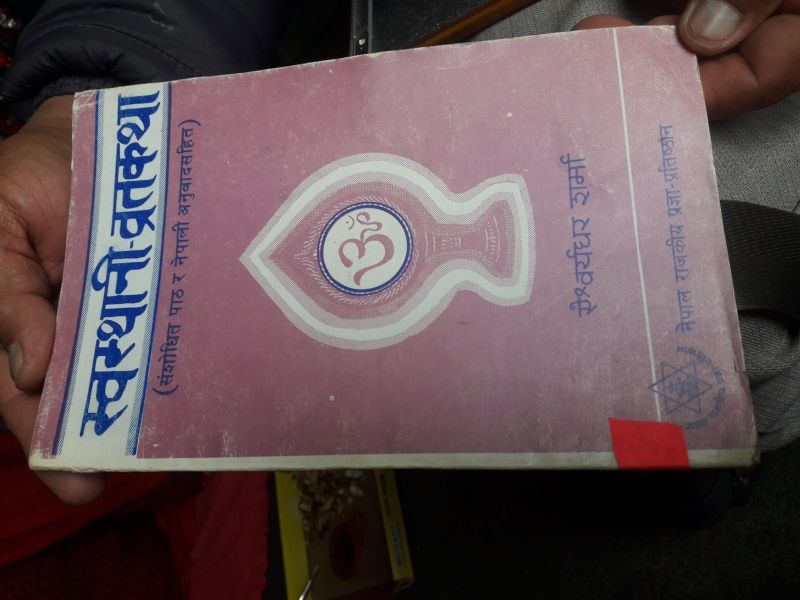
3. The story has changed over time
The text of Swasthani Brata Katha has changed considerably between the 16th and 21st centuries. The first 200 years of the texts were about Goma, Chandrawati, Navaraj and Swasthani. After that, three major additions have been seen. The first is in the story of Shiva and Parvati; the second is the narrative of Vishnu including Madhu-Kaitabha and the creation of the universe. The third is the stories about Vrinda, Kamadev and others. Two-thirds of the stories today have become of Shiva whereas only the latter part of the story is about Swasthani.
4. Madhav Narayan and Swasthani jatras are different
According to Vishnu Puran, both Lord Vishnu and Goddess Bajrayogini have 12 names for 12 months of the year. Their names for the 10th Nepali month (i.e. Magh) are Madhav Narayan and Swasthani respectively. This is also the reason why their forms are worshipped together this month. Due to the lack of iconography or visual depiction of the goddess outside modern times, there is confusion and people consider Madhav Narayan idols as Swasthani. Many take the Madhav Narayan Jatra and Swasthani Brata as the same.
5. Sankhu is important for this festival
In an ancient book titled ‘Manishail Mahabadan’, there is a story of Lord Vishnu (Narayan), as the creator of the universe. The story says he once became powerless after which he came to Sankhu. There, he worshipped Goddess Bajryogini as Goddess Swasthani, for which he took fast for 30 days, with 12 days of tirtha (pilgrimage), nine days for worshipping water resources and nine days worshipping the snake kings. After that, he got reinstated as the omniscient power of the universe. Following his footsteps, the followers started observing the fast for penance and believing their wishes will get fulfilled.
6. It has a lot of similarities with Teej and Shrawan fasts
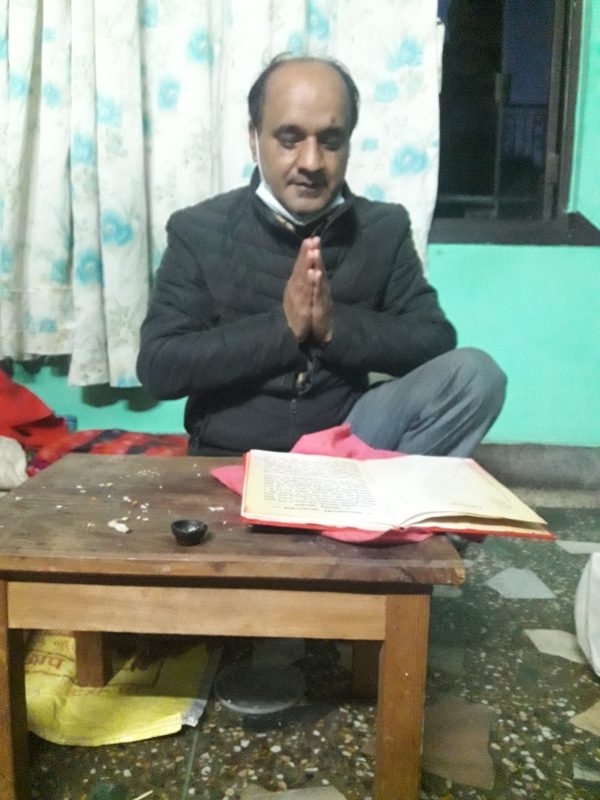
Swasthani Brata festival shares similarities with Teej and Shrawan month fasting that Nepali women observe every year. In all of these festivals, the story of Goddess Parvati and her long fast to get Lord Shiva as her husband are referred to. Historians say the stories get interconnected because Parvati’s fast and meditation for ‘Shivawati’ was very long. She was advised by Lord Vishnu to do the Swasthani Brata to get her wishes to get fulfilled. She took fast for Teej, Shrawan, and Swasthani to achieve that, so we can see the connection there.
7. But, there are tough rules for some men
In Sankhu, male residents from seven different families participate in the month-long festival as ‘saptarishis’ or seven sages, as per the tradition. If a family has more than one men, they share the responsibilities in turn. For the whole month, all seven follow a strict diet and rituals to stay pure.
They avoid salt, three-time meals, human touch, or any kind of luxury including the warmth of the bed, a roof over their heads, and shoes. They have to get up at 4 every morning, take a bath, perform pujas, and follow a strict diet of rice, milk, molasses, ghee, Nepali red radish (daikon), oranges and apples, which are usually offerings from the pilgrims.
8. Pilgrims visit other sites also around the Kathmandu valley

Hundreds of thousands of devotees throng Sankhu every year. Many take shelter on the premises of the temple whereas many people visit every day throughout the month. On the 13th day, the male devotees go to the Bajrayogini temple from Shalinadi to offer their prayers. This ritual is called Dun Danegu, when they lay flat on the ground with their hands stretched out front. They return to the riverside in the same way without taking a single step, on foot.
As a part of the ritual, they also reach Pashupatinath Temple in Kathmandu on the 14th day followed by their pilgrimage to Shesh Narayan temple at Pharping the next day. Similarly, they reach Tribeni Ghat of Panauti on the 19th day and Changunarayan on the 27th day. On each of the trips, they take a bath at the destinations, do puja, and come back to Sankhu to sleep.
9. It involves a unique tradition of a long walk
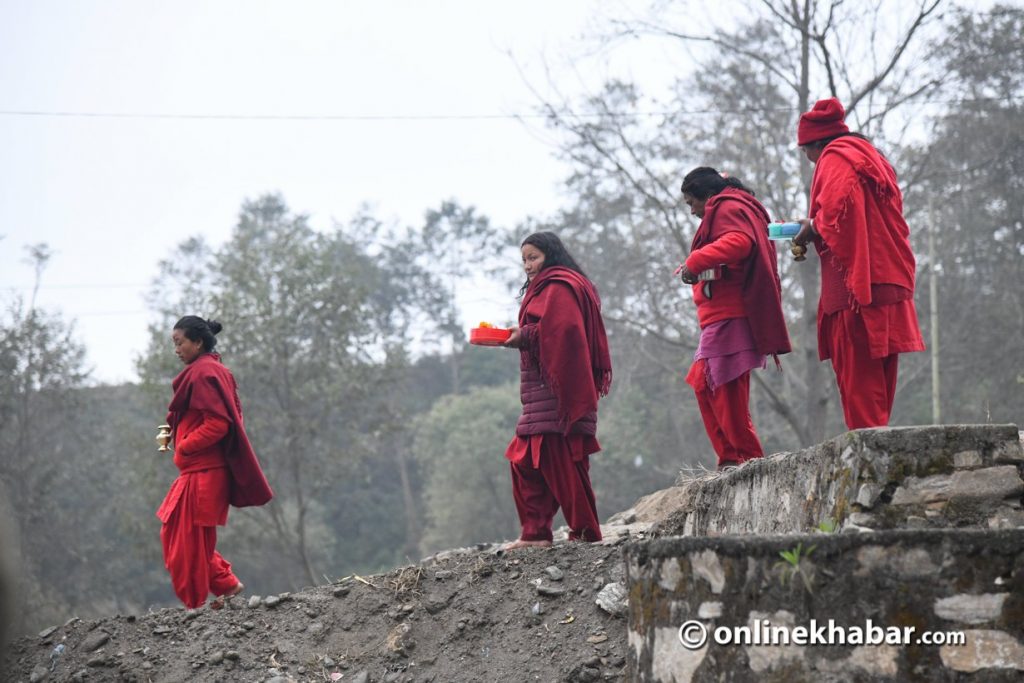
Another reference made in ‘Manishail Mahabadan’ gives insight into this tradition. To complete his fasting ritual, Lord Vishnu needed a few items. For that, he first reached Pashupatinath to collect ekmukhi rudraksha, then to Pharping to collect golden lotus flowers, after that to Panauti to collect 108 types of flowers, and to Changunarayanto to collect rice grains from the Satyayug. He made the trips on foot. Pilgrims today make the same trip during the one-month long fast.
10. Several researchers have studied the tradition
Swasthani Barta Katha is a religious text found in almost every household of Nepal. The text is also said to be a prime example of how the Hindu religion flourished in Nepal and is taken as a reflection of how religious scriptures developed through time. Citing which, many pieces of research and studies have been conducted about and around the tradition, including the interest of many international students and researchers. Many have translated the text in other languages as well.



